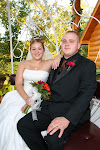I love this story and I love the music. Hope you enjoy!
The “Lenny” story is a love story. Love for a woman and love for a guitar.
Stevie Ray Vaughan was not yet a star on his 26th birthday, Oct. 3, 1980, when his wife, Lenora “Lenny” Vaughan, gave him a used Stratocaster guitar that had recently caught his eye in an Austin, Texas, pawnshop. Though already a phenomenal guitarist, many still viewed him as “Jimmie Vaughan’s little brother,” which was perfectly OK with the easygoing young musician.
The story begins a few years earlier, when Stevie and Lenora first met at a Halloween party at east Austin nightspot La Cucaracha, where he was playing (“Where else are you gonna meet a musician?” Lenora is fond of saying). When she saw him again a couple years later at the Rome Inn with his band, Triple Threat, she was moved by his musical power onstage and his charmingly unassuming demeanor offstage.
“I kind of fell for him that day,” she said. “It was tear jerking, the guy was so good. He’s so sweet when you meet him, and then he plays, and he is so fierce. You can’t help but feel what he feels. That was what I saw when he played.”
The next time they met, at a Mexican restaurant in downtown Austin, that was it. “We looked at each other and we just went “Uh-huh,” Lenora said.
About a year after they were married, Lenora remembers, “The guys went to a pawnshop and saw this guitar. One guy wanted it, and Stevie said, ‘I want it more.’” It was a 1965 maple-neck Fender Stratocaster with a rosewood fingerboard and the original pickups that, from the look of it, had seen better days. Although it began life as a three-color sunburst model, it had obviously been refinished none too expertly at some point, and now it had a dark natural finish bearing an elaborately arty inlay behind the bridge. Nonetheless, there was something about it that clearly and immediately resonated deeply with Vaughan. That guitar really grabbed him.
Unfortunately it cost $350. Money was tight in those pre-stardom days, and neither Stevie nor Lenora had enough. His birthday was coming up, though, and she devised a way of getting the guitar for him.
“I went out and found seven people with $50, and they all put their money in and we got the guitar, and we gave it to him for his birthday at (Austin nightclub) Steamboat Springs on 6th St.,” she said.
Vaughan was thrilled. They took the guitar home and sometime that night, as Lenora slept, her husband wrote a new song on it. In the morning, Lenora remembers, “He was sitting on the edge of the bed with the guitar and said, ‘Listen to this.’” He played her the song he had written that night, “Lenny,” and she cried.
“It was beautiful,” she said. “How can you stop loving anything like that? I’ve never once in my life listened to that song without crying.”
* * * * *
Soon after, Vaughan received a new Charvel® guitar neck as a gift from his friend and ZZ Top guitarist Billy F Gibbons. Vaughan installed the neck (with a maple fingerboard) on “Lenny”, at which time he also etched his name into the guitar’s neck plate as a point of pride.
Fame began knocking loudly on Vaughan’s door. He first drew worldwide recognition by playing with David Bowie on his chart-topping 1983 comeback Let’s Dance; then by not playing with David Bowie. Vaughan famously declined to tour with Bowie in favor of releasing the debut album he’d recorded in Los Angeles in 1982 with his powerful trio, Double Trouble.
His 1983 breakthrough album, Texas Flood, made Vaughan an even bigger star, and Couldn’t Stand the Weather (1984) only fanned the flames. Blues had never before hit the charts so hard. It was as though Vaughan had taken everything powerful and true about the blues and infused it with the ferocious intensity of rock ‘n’ roll, creating something explosive and dynamic – simultaneously familiar and revolutionary. The song “Lenny” appeared on Texas Flood and was featured regularly in Vaughan’s live set. Whenever he played it in concert, Vaughan would set aside his beloved “Number One” Stratocaster and pick up “Lenny” (the guitar).
“It tore me up,” Lenora said. “It’s so emotional for me. Overwhelming. That’s a lot of love.”
Fame had its ups and downs, but Vaughan by all accounts never succumbed to excesses of ego or vanity. He was still Stevie, and he just kept playing.
“It was like a roller coaster; like a snowball,” Lenora said. “It just got bigger and bigger and bigger. And the guy maintained—he just played. That’s all he did—he played guitar.”
Fame also brought a great many guitars, but only Number One and “Lenny” truly meant something important to Vaughan.
“He was a pretty simple person,” said Chris Layton, Double Trouble drummer. “The fact that he had it meant everything. Some people have lots of drum kits; lots of guitars, and they say, “Oh, this is what this means …” and “This is why I bought this …” and “This is what this is for …”
“He had a lot of guitars, but most of them were stored away and he never played them because they didn’t mean anything. But that guitar, and Number One, by the fact that they were always with him, spoke volumes about what they meant to him. He wasn’t the kind of person who would extrapolate on what the meaning of all of it was. He probably had the least amount of ego of anybody I’ve ever played with. He was just a strong, certain person about who he was as a player. He wanted to give himself to the music, and wanted people to get that.”
* * * * *
Lenora remembers a particularly special “Lenny” story from the mid-1980s, when Stevie was in Dallas recording Soul to Soul.
Vaughan was invited to play the national anthem at the Houston Astros season opener, against the Los Angeles Dodgers at the Houston Astrodome on Wednesday, April 10, 1985. The Vaughans were hastily flown to Houston, where Stevie confessed to his wife that he didn’t know how to play the Star Spangled Banner.
Watching her husband play the national anthem there to a packed house in the cavernous Astrodome, Lenora turned to the guy standing next to her and said, “You know, he didn’t know how that went—I had to hum it to him on the way here.”
The man replied, “Yeah, it’s a hard song.”
When Lenora asked the man if he knew her husband, he nodded and said, “No, this is the first time I’ve ever heard him. My name’s Mickey Mantle.”
Mantle was at the game to throw the first pitch; it was pure chance that Lenora found herself standing next to one of the greatest baseball players in history. When Stevie joined her minutes later, she introduced the two men.
“I don’t know how to play that song,” Vaughan confided to Mantle, to which the Yankees great replied reassuringly, “Nobody can play that song.”
Lenora then sheepishly asked for Mantle’s autograph, upon which Mantle asked where her baseball bat was. “Oh … oh … am I supposed to have a bat?” she stammered. Mantle explained that most autograph seekers bring a bat.
Lenora remembers that “I was looking around for a piece of paper or something, and Stevie said, ‘Well I’ve got this bat right here—her name’s Lenny.’ And he took it out and said, ‘Why don’t you sign this?’ And Mickey said, ‘It’d be my pleasure,’” adding even more magic to the journeyed pawnshop instrument.
* * * * *
Stevie Ray Vaughan wasn’t a complicated guy, even when fame made his life crazy.
By all accounts, he was, from beginning to tragic end, friendly, warm, genuine, relaxed, considerate, compassionate and comfortably self-assured, with no hint of the ego or arrogance often seen in stars of his stature. For all his utter ferocity onstage, offstage he couldn’t be any sweeter. That’s what everybody whose life he touched even a little says. Everybody liked him. Most loved him.
It’s no surprise to hear Lenora say that sometimes Vaughan slept at night with one arm around her and another around the guitar he named for her. Vaughan played “Lenny” selectively and with great passion. He featured it on the namesake song, of course, and was later fond of playing it on “Riviera Paradise” from 1989’s In Step – a testament to its meaning to him.
Years after Stevie Ray Vaughan’s death in an August 1990 helicopter crash, and at older brother Jimmie Vaughan’s behest, “Lenny” became the only guitar from his estate to be made available to the public. At the historic June 24, 2004, Christie’s auction in New York to benefit Eric Clapton’s Crossroads Centre rehabilitation facility, Lenny was purchased by Guitar Center, for $623,500.
A hefty figure, to be sure. That said, however, does quantifying “Lenny’s” value and assigning a dollar figure really matter? Could you assign such value to the effect that Stevie Ray Vaughan and his music had on the people in his life and on the world?
Not really. After all, the story of Stevie Ray and Lenora Vaughan; of his music and of the guitar he most affectionately nicknamed for her is, first and foremost, a love story.
Browsing in Franklin NC
15 hours ago








A woman who cooks and can appreciate good music. Why couldn't I have gotten that lucky?
ReplyDeleteviva srv! he was the best.
ReplyDeleteA beautiful story and a little hard to read knowing how it ends. RIP Stevie Ray. A great talent.
ReplyDeleteI LOVE, LOVE, LOVE this post. We are HUGE Stevie Ray fan's. We lived in Austin for past 5 years before recently moving to Houston. On the river trail they have a Stevie Ray Vaughan statue (very cool). Hubby plays a lot of blues. Is that what kind of music y'all play? We saw BB King last year in Austin. If y'all like Stevie Ray you would like another Austin local band called, Nakia & his Southern cousins. Jonny Lang & Buddy Guy are playing in Ft. Worth in Feb(can't wait). ZZ Top lives here in Houston (played a show about 2 months ago). La Grange is my all time fav..Haa haa haa...Great post!
ReplyDelete